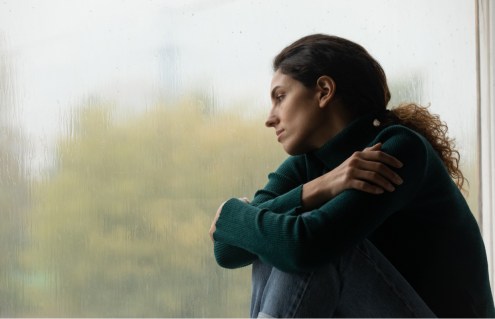How to make stepfamilies work
Becoming part of a step-family is not something most children would choose, and tensions can arise. But with good communication, new families can succeed. By Suzie Hayman

All families have conflict, and every family will have times when voices are raised and doors are slammed. This can be healthy – a way of getting disagreements out in the open and beginning the process of dealing with them. It’s not the fact that you argue that matters, it’s how you resolve conflict.
The problem in a step-family is that there are so many more issues to fight about, and so many barriers to communication. Sian and Peter came to me for help as they couldn’t understand why their family was having so much trouble. They had dated for a year before moving in together, and during that time her children – Adam, 12, and Adele, 14 – and his – 11-year-old Ben and 13-year-old Chloe – had got on famously, and all seemed pleased that their parents were happy.
But since they all moved in together there had been endless quarrels. What puzzled Sian and Peter was that it wasn’t always family against family. Sometimes, the boys fought and the girls supported Adam. At other times, everyone ganged up on Adele. But mostly, everyone was against the adults. And the more Sian and Peter emphasised how lucky they were to be living in a family instead of struggling on their own (after the death of his wife five years previously and her divorce two years ago), the worse it got.
In step-families, whether you realise it or not, there are so many reasons to be angry – many more than in a first-time family. None of us starts our own family with a totally clean sheet; we all bring with us baggage from our childhoods. But in a step-family you can be struggling with a double load – damage from your past but also from more recent hurt. While all families have a lot in common, step-families have one profound difference: a person has to have died or a relationship come apart for a step-family to exist. This means two divergent agendas are created from the start, and these can cause havoc.
Separation and divorce are adult solutions to adult problems. Children may have found living in that family difficult, but while a partner can look at a partner and say, ‘I lived without you before and I can do without you now’, a parent is for life. So while you may see extricating yourself from this relationship as the answer, a child would prefer for you to fix it, and feels angry that their views aren’t taken into account.
Ending their original family may not be their preferred option, creating a new one is certainly not what they’d choose.
The times when Sian’s children stayed with their father were particularly difficult, with all four children behaving badly. For Adam and Adele, it meant someone else’s children were spending time with their mother. They loved seeing their father, but the days before and after each visit only served to underline they only visited him, they didn’t live with him. And when Adam and Adele stayed with their father it drove home to Ben and Chloe that their mother was dead. They’d dump their pain on Sian, but left their father alone because it felt too risky – he might die too if they pushed him.
Conversely, Adam and Adele targeted their mother because it felt safer – they were afraid to show anger to their father in case he stopped contact with them. But Paul wasn’t their dad, so all their rage could be vented at him. The constant refrain was, ‘You can’t tell me what to do, you’re not my dad.’
Both adults were losing control of the children and themselves. Like many people in similar situations, when faced with toddler tantrums or teenage moods they reacted with corresponding behaviour. It’s natural to get pulled in to trying to win the argument, rather than calming everyone down. Step-families may have more initial difficulties, but that doesn’t mean you can’t resolve them. The keys are understanding and communication.
When Sian and Peter put themselves in their children’s shoes, they were astonished at the very different points of view that this brought up. Their joyful beginning of a new life together was an ending for the children – confirmation for Sian’s kids that she was never getting back with their father, and for Peter’s kids that their mother was gone for ever. Because the new family was not their choice, they had less incentive to make it work, and wanted to make their grief known.
The adults began talking and, more importantly, listening. Everyone was given the chance to say what they were feeling, and what they were upset about. Together they came up with a list of rules, and worked out ways of giving everyone responsibilities that helped them feel included. Most importantly, Sian and Peter acknowledged the losses their children had sustained for them to be there. This enabled the children to move on to seeing the gains.
So what can you do in a step-family to manage the differences? Communicate. This is two-way – you need to listen as much as talk. Try sitting down one-to-one with a timer and giving each person two minutes to talk. No interruptions, show you’re listening by eye contact, and afterwards, check you understood by paraphrasing back what was said.
Family counselling can help with day-to-day grievances, but if you feel you have more to deal with from the recent split, you could try individual sessions. Children can manage having different rules in different houses. But under the same roof you need to agree a compromise so everyone is treated fairly.
Make rules as positive as possible – more dos than don’ts – and take their rules as well as yours. Revise them if they’re not working, or need to be updated.
Instead of trying to fix problems for them, help children do so themselves. State the problem – ‘You’re upset because…’ and then say ‘What can we do to resolve this?’ Sometimes, the answer is simply being sympathetic. You don’t have to solve a situation to help people feel better. Saying, ‘I can see that you’re angry/upset/frustrated about this’ can help. Help step-parents make their own relationship with step-children.
Find ways of spending time together. And give each child quality time alone with a parent. This takes planning but is worth it.
More inspiration:
Read ‘Teach Yourself: Be A Great Step Parent 2010’ by Suzie Hayman
Browse Family Lives is an excellent website from this national charity, providing support to anyone caring for children. You can Skype or chat online, or call the freephone confidential helpline on 0808 800 2222
Read Love, loss and recovery – moving out and moving on by David Head on LifeLabs








